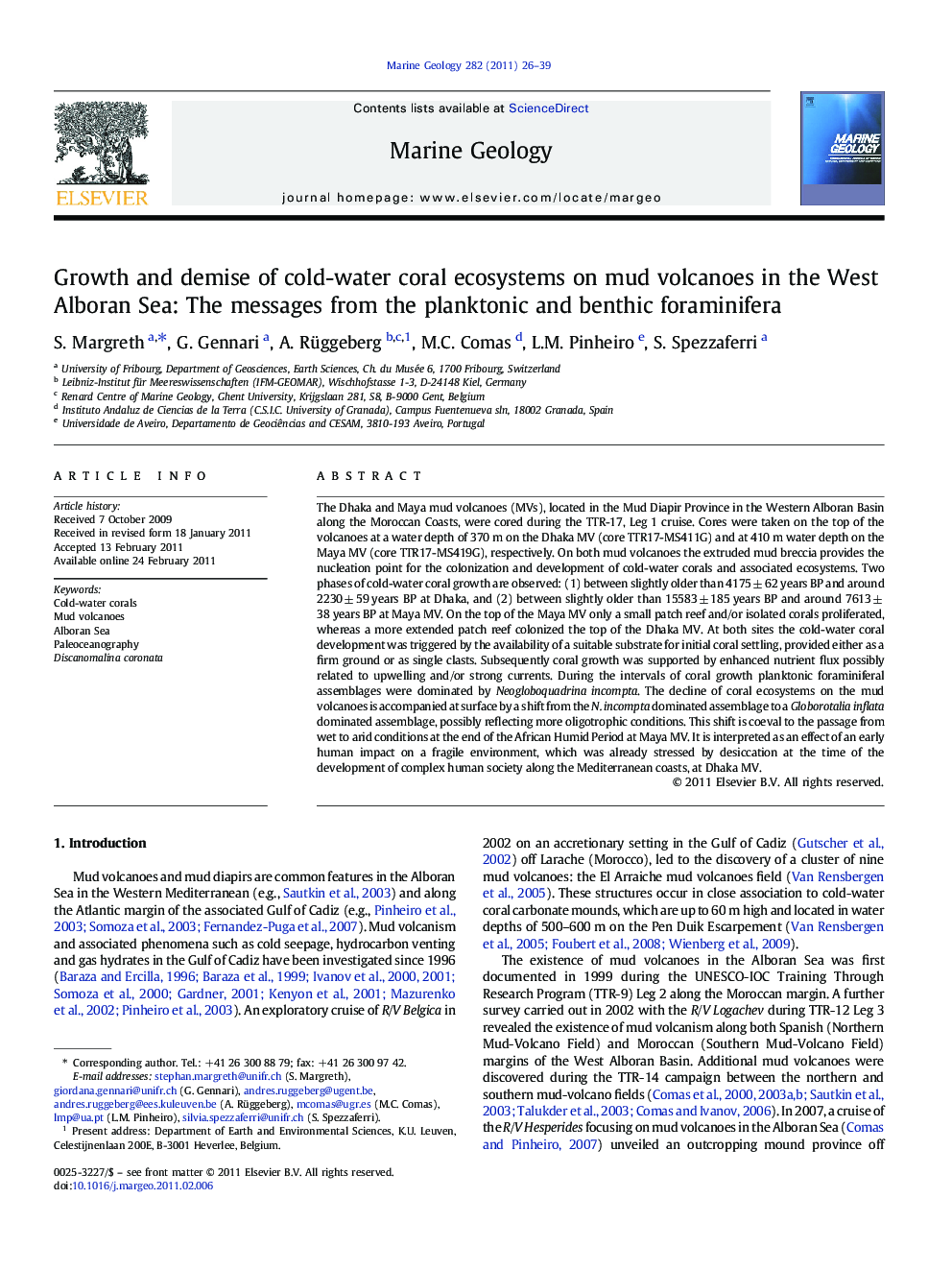| کد مقاله | کد نشریه | سال انتشار | مقاله انگلیسی | نسخه تمام متن |
|---|---|---|---|---|
| 6441876 | 1639139 | 2011 | 14 صفحه PDF | دانلود رایگان |

The Dhaka and Maya mud volcanoes (MVs), located in the Mud Diapir Province in the Western Alboran Basin along the Moroccan Coasts, were cored during the TTR-17, Leg 1 cruise. Cores were taken on the top of the volcanoes at a water depth of 370 m on the Dhaka MV (core TTR17-MS411G) and at 410 m water depth on the Maya MV (core TTR17-MS419G), respectively. On both mud volcanoes the extruded mud breccia provides the nucleation point for the colonization and development of cold-water corals and associated ecosystems. Two phases of cold-water coral growth are observed: (1) between slightly older than 4175 ± 62 years BP and around 2230 ± 59 years BP at Dhaka, and (2) between slightly older than 15583 ± 185 years BP and around 7613 ± 38 years BP at Maya MV. On the top of the Maya MV only a small patch reef and/or isolated corals proliferated, whereas a more extended patch reef colonized the top of the Dhaka MV. At both sites the cold-water coral development was triggered by the availability of a suitable substrate for initial coral settling, provided either as a firm ground or as single clasts. Subsequently coral growth was supported by enhanced nutrient flux possibly related to upwelling and/or strong currents. During the intervals of coral growth planktonic foraminiferal assemblages were dominated by Neogloboquadrina incompta. The decline of coral ecosystems on the mud volcanoes is accompanied at surface by a shift from the N. incompta dominated assemblage to a Globorotalia inflata dominated assemblage, possibly reflecting more oligotrophic conditions. This shift is coeval to the passage from wet to arid conditions at the end of the African Humid Period at Maya MV. It is interpreted as an effect of an early human impact on a fragile environment, which was already stressed by desiccation at the time of the development of complex human society along the Mediterranean coasts, at Dhaka MV.
Research Highlights⺠We studied the foraminifera of two cores from mud volcanoes in the Alboran Sea. ⺠The sediment contains mud breccia, coral bearing horizon, and hemi-pelagic drape. ⺠The coral bearing horizon contains a characteristic foraminiferal assemblage. ⺠Cold-water corals settled on firm ground provided by the mud breccia. ⺠Cold-water corals are restricted to characteristic oceanographic conditions.
Journal: Marine Geology - Volume 282, Issues 1â2, 30 March 2011, Pages 26-39